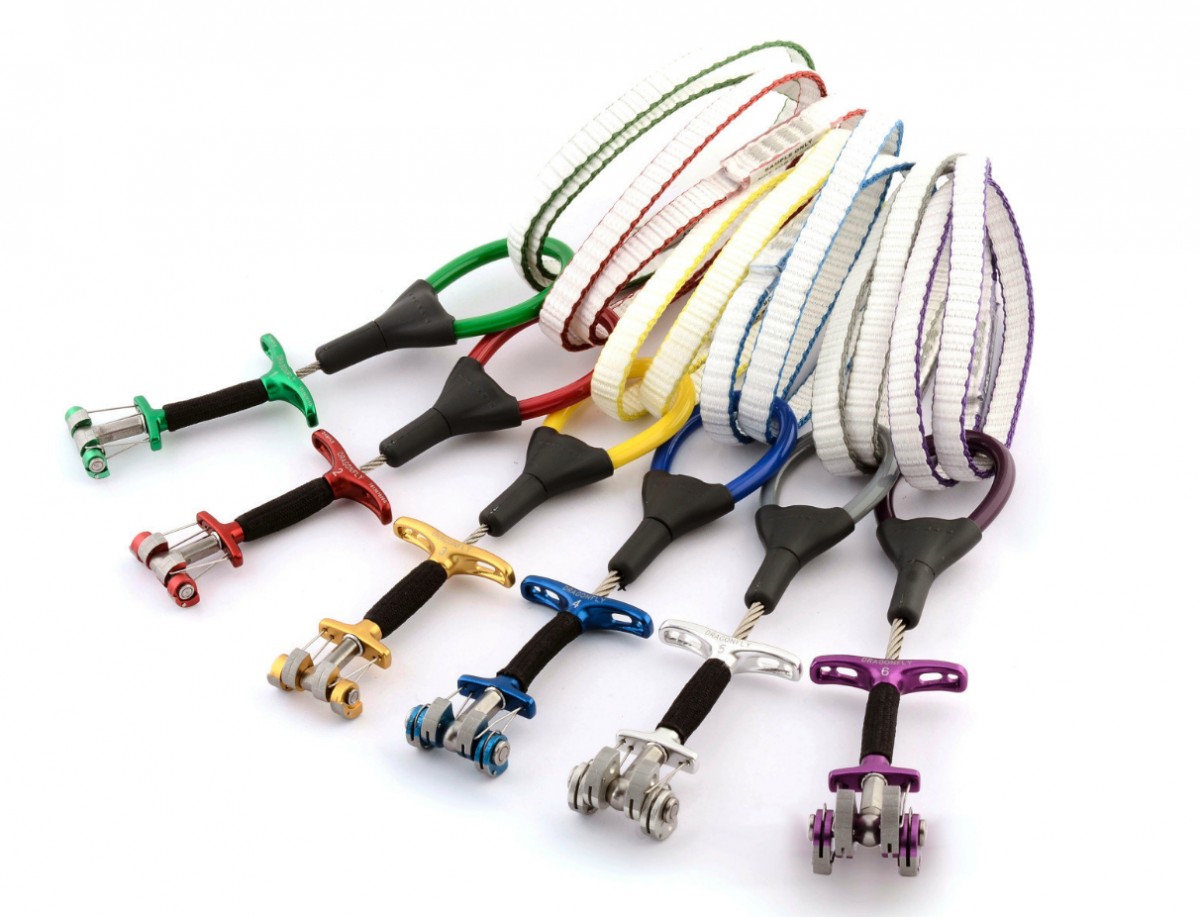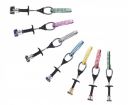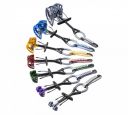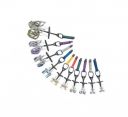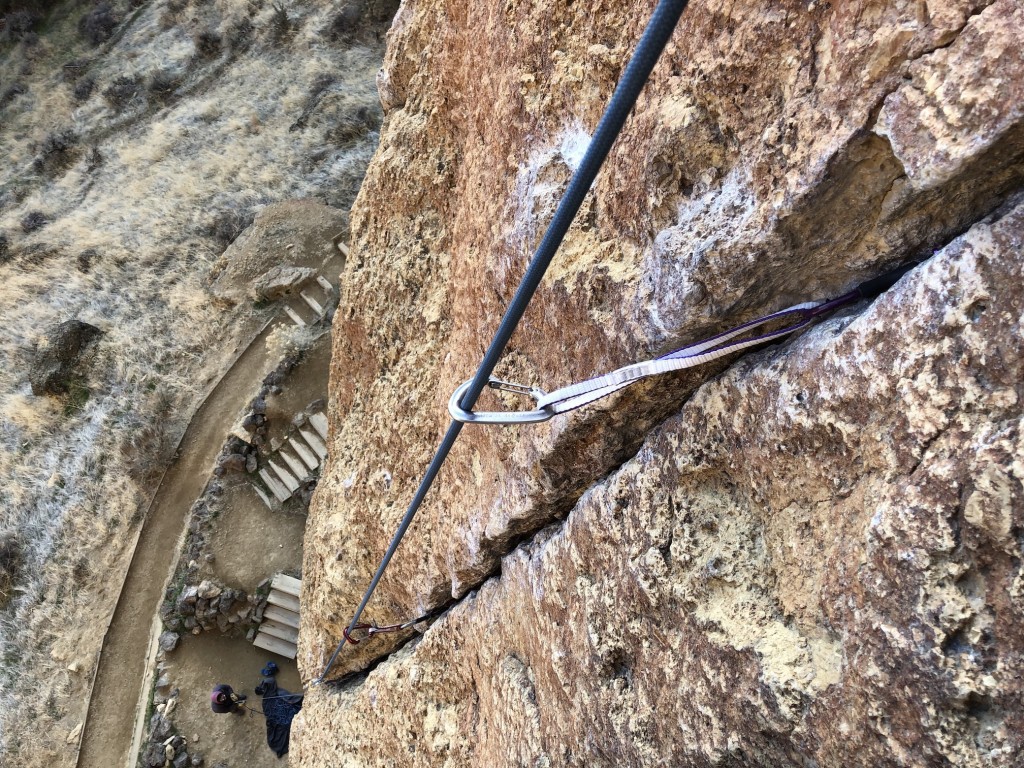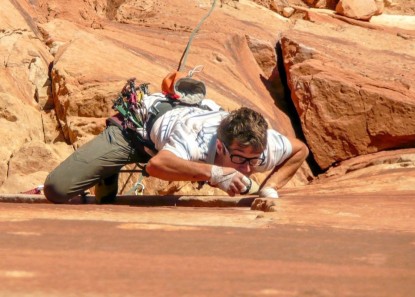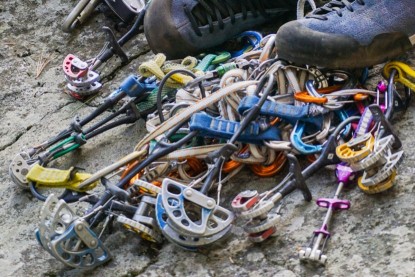DMM Dragonfly Review
Our Verdict
Compare to Similar Products
 This Product
DMM Dragonfly | |||||
|---|---|---|---|---|---|
| Awards | |||||
| Price | $90 List $89.95 at Amazon | $89.95 at REI Compare at 3 sellers | $99.95 at REI Compare at 3 sellers | $84.95 at REI Compare at 3 sellers | $69.95 at REI Compare at 3 sellers |
Overall Score  |
|||||
| Star Rating | |||||
| Bottom Line | These small cams are excellent for their design and performance | A top choice for smaller sizes due to the widest range and incredible ease of use | These cams are awesome for long Yosemite free climbs and Indian Creek splitters | These are the most popular cams at Indian Creek due to their great range and durability | The super light, narrow headed Ultralight Master Cam have you covered in small cracks and flares |
| Rating Categories | DMM Dragonfly | Black Diamond Camal... | Black Diamond Camal... | Black Diamond Camalot | Metolius Ultralight... |
| Free Climbing (20%) | |||||
| Weight (15%) | |||||
| Range (15%) | |||||
| Horizontal Cracks (15%) | |||||
| Tight Placements (15%) | |||||
| Durability (10%) | |||||
| Walking (5%) | |||||
| Aid Climbing (5%) | |||||
| Specs | DMM Dragonfly | Black Diamond Camal... | Black Diamond Camal... | Black Diamond Camalot | Metolius Ultralight... |
| Weight (1 inch size piece) | 2.6 oz. | 2.8 oz. | 2.6 oz | 3.28 oz | 2.3 oz |
| Range (inches) | .31-1.11" | .29" -1.66" | .61-4.51" | .54-7.68" | .34-2.81" |
| Sling Length (inches) | 5-10" | 3.75" | 3.75" | 3.75" | 3.75" |
| Stem width above trigger | |||||
| Single or Double Axle? | Single | Double down to .3 | Double | Double | Single |
| Extendable Sling? | Yes | No | No | No | No |
| Sling material | Dynatec | Dynex | Dyneema | Nylon | Dyneema |
| High Clip in for Aid? | Yes | Yes | Yes | Yes | No |
| Cam Stops? | No | Yes down to .3 | Yes | Yes | Yes |
Our Analysis and Test Results
We consider the DMM Dragonfly to be very similar to, but to improve upon, the design approach used in the famous CCH Alien cams. Dave Waggoner invented and designed the original Alien cams, selling them for over 15 years through his company CCH (Colorado Custom Hardware). These cams quickly gained a cult following and were well-loved as one of the best small cams, in no small part due to their unique design. However, in the second half of the 2000's they were plagued by a recall and what seemed to be recurring reports of quality control issues, and then seemed to go out of business when Waggoner died in 2010. A scramble for the Alien design patents ensued, but surprisingly few viable spin-offs have made it to market. The FIXE Alien Revolution modifies and updates the original Alien design, and in our testing we found them to perform excellently. Totem made the Basics for a while, which offered a similar design, but they suffered a recall and production was permanently stopped. Kailas Nuco cams are made in China with what seem to be similar design features, but lack the smallest and largest cam sizes. With the Dragonfly, DMM becomes the fourth company since CCH to produce cams that embrace a similar design approach, and offer much of what we loved about the original CCH Aliens. We feel the Dragonfly is the highest quality and best small cam to use this design yet.
There are two features that these cams share with the original CCH Alien and Fixe Alien products, which are not found with most other competing cams. The first is the cam springs that are recessed inside the cam lobes themselves, allowing for a very narrow head width that fits easier into shallow, tight placements and pin scars. The three largest Dragonflies incorporate this design, while the three smallest have cam lobes that are so small the springs cannot fit inside. These smaller cams actually have wider heads than the larger ones for this reason, because the springs also have to fit along the head axle. The smoothness of the trigger pull is compromised slightly by the added friction of the compressed springs in these smaller cams, although it doesn't affect the performance or grip of the cams in any way. The second design feature shared with Original Alien cams is the soft sleeve that links the cam lobes to the trigger pull, which allows for an extremely flexible single stem. While the outside of this sleeve is cosmetic black fabric, the inside is a thin layer of woven aluminum fibers. Before this design feature was included in the original Aliens, there were no flexible stemmed camming units (at the time many cams still had two stems), and this feature has since been imitated by the Black Diamond X4's. A flexible single stem not only opens up a world of potential horizontal placements without risk of mangling the stem, but also allows for a wider range of shallow and pocket placements, including in pin scars, without the potential for a rigid stem levering the head out of the placement when weighted. The Dragonflies also include a handy thumb loop and a doubled-up, extendable sling.
Performance Comparison
Free Climbing
The Dragonflies are awesome for free climbing. They stick to the exact same color scheme as Black Diamond cams, which is likely the most familiar cam color scheme in the world, so not only do they mesh seamlessly with those cams, but don't require learning a new scheme. These colors are ubiquitous throughout the design, with a colored sling, thumb loop, trigger bar, and anodized cam lobes, so quick and easy identification on the harness is a breeze.
The cam angle used throughout is 13.75 degrees, which is the same as used on other DMM cams. This gives them a rather round shape, which fits great into pockets and pin scars, while providing excellent holding power. The alloy used is 6081, which according to DMM is the same softness as 6061 but has better corrosion resistance, so they are will deform slightly to bite into granules and crystals. However, the camming angle means that each unit has less range than one might expect with FIXE or BD small cams, so there is a bit less forgiveness if you size the crack wrong and grab the wrong cam off your harness. In essence, you must grab the right cam.
The stem of the cam is the most flexible of any we have tested, which has merits and some disadvantages. In general we noticed no difficulties while placing these cams despite their floppy stems. However, at times they prove slightly harder to remove if they are stuck, because wiggling the stem around to free up the lobes doesn't have the same effect it would with a more rigid stem. Overall, these cams work great for free climbing.
Weight
We weighed the 1-inch sized piece, a purple #6, to compare it to other brand's cams of the same size. It weighed 2.6 ounces, which is a bit heavier than comparable sized FIXE or Metolius small cams, but a bit lighter than comparable Black Diamonds.
However, when comparing the entire range of six small cams, the Dragonflies would weigh 386g, or 13.62 ounces. This is heavier than a comparable range of other small cams, although if you didn't choose to carry the smallest #1, which few will while free climbing, it would immediately be middle of the road. Bottom line, while they aren't the lightest, we are talking very small cams here, and the differences are pretty negligible.
Range
The Dragonfly cams come in a set of 6, with the largest being the same size as a .5 Camalot, and the smallest #1 pretty much equal to the smallest cam currently available in the world. Remarkably, the two smallest cams have a holding power of 6kN, which is a fair bit more than the 5kN rating for most other micro cams, and certainly could be considered viable to fall onto, given solid rock and a perfect placement. The entire range spans from .31" (7.8mm) up to 1.11" (28.3mm).
Due to their relatively low camming angle though, which is the same as the camming angle on the Dragon Cams, and second smallest next to those made by Metolius, the range of an individual cam is quite small, requiring precision in your cam selection. If you choose a cam that is slightly too big for a given placement, you likely will not be able to simply jam it in there fully contracted. Similarly, if you choose a cam slightly too small, it will umbrella out enough that you will likely not feel super inspired and confident. Accurately choosing the perfect sized piece is a skill that climbers will develop with time, so experience is the antidote to this problem.
Horizontal Cracks
The Dragonflies are one of the best cams we have tested for horizontal placements, and are thus an excellent choice for areas that mainly protect in horizontals, such as the Gunks. The extremely flexible stem and sheathed trigger allow the stem to flex downward over rounded edges, and the extendable sling allows for greater versatility for setting the cam well back from an edge.
Worth pointing out is that no cam, no matter what sort of stem design it has, is designed to be loaded over a sharp edge. If you fall in this situation, the cam will most likely hold that fall, but will also likely be irrevocably damaged and need to be retired. Optimize your horizontal placements so that the stem is not loaded over an edge.
Tight Placements
These cams are excellent in tight placements. The smallest unit will fit into a smaller placement than any other you can buy today, with a strength rating that is strong enough to be able to fall onto it. What more could you want?
In terms of head width, we found that the larger three sizes have very narrow heads due to the internally recessed cam springs, and are thus very serviceable in shallow placements, and fit well into pockets and pods. The smallest three sizes are still quite narrow in the heads, but are actually slightly wider than competing micro cam sizes, although they are all within a couple millimeters.
Durability
We tested these cams for a couple months in the fall of 2019 before publishing this review, and noticed no issues with durability. However, this is not long enough to truly understand potential issues, so we will continue testing into the future and update with issues if we come across any.
With over 20 years of trad climbing experience by multiple reviewers, we have a good understanding of where cams are likely to fail. The trigger wires are made of solid metal, rather than wire, so are not capable of fraying over time, and furthermore look very easy to replace by hand in the field if need be. A simple paper clip would likely do the trick! The soft 6081 aluminum alloy in the head means there will be some deformation of the metal on the cam lobes when they are fallen onto, but this is by design, and we have never noticed this negatively affecting performance on similar style cams in the past. The internal springs have the potential to get more easily gummed up by dirt, so you need to keep them clean and lubed for ideal performance.
Walking
All cams will walk if they are put in a position where outward and upward pull by the lead rope is frequent. The Dragonflies do a good job of mitigating much of this potential, however, with their extendable sling and very flexible stem.
The extendable sling is convenient simply because it allows you to extend the protection without needing to use a quickdraw or alpine quickdraw, so you can get by with carrying less carabiners on your harness.
Aid Climbing
Like most small camming devices, the DMM Dragonflies are good for aid climbing. They can fit in tiny little cracks, potentially protecting slots where you may have only been able to use a piton or cam hook. Their thumb loop clip-in point and flexible stem enhance their value in this arena.
Unfortunately, they do not currently come available in offset sizes, where one side of the cam is a different size than the other. Offsets are invaluable for aid climbing in pin scars, and so we suspect that climbers looking to enhance their aid rack will prefer one of the brands that has offsets, or simply opt for Totems.
Value
While it's hard to call these cams affordable, the fact is that they are less than or the same price as every other small cam option, with the exception of our Best Buy Award Winner, the Metolius Ultralight Master Cams. Purchasing these cams should not lead to a budget induced crisis, and since they are made by a company long known for high quality and excellent customer care, we think they are an excellent value.
Conclusion
The DMM Dragonflies are an excellent small camming unit due largely to their effective improvement on the design approach pioneered by the original CCH Alien, and we have been very happy with their performance. While no small cam design is literally perfect (yet!), we think these are among the most reliable and highest quality small cam that you can buy, with performance to match.


